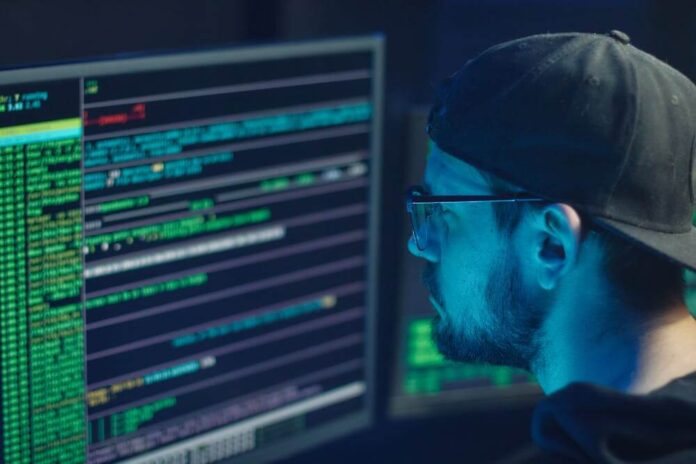With the rise of remote work as a standard for more than half of all businesses, securing network access has become paramount. Currently, 58% of the companies support work-from-home setups, highlighting the increased need to safeguard network entry points.
As remote employment permeates various industries, it introduces significant risks and weaknesses to the security of networks. For companies, implementing effective security strategies is essential to protecting their networks.
As we examine the crucial practices all organizations must embrace, we will investigate methods to strengthen your defenses against the dynamic nature of cyber threats.
Implementing Robust Authentication Measures
To secure remote access, the initial step involves setting up robust authentication measures. This process entails the use of multi-factor authentication (MFA) at every remote access point.
MFA demands that users submit multiple proofs of identity to access a network, greatly diminishing the likelihood of unauthorized entry. Beyond just using a password, MFA combines something you know with something you possess, thus providing a more secure barrier.
Additionally, integrating biometric verification can enhance security measures, making unauthorized access even more difficult. Companies should also incorporate checks based on the time and location of access to further improve security protocols.
Utilizing Secure Remote Access Tools
In the domain of remote work, leveraging the right tools for network access is not just about convenience but also about ensuring ironclad security and operational efficiency. As technology evolves, so do the strategies for protecting sensitive information and maintaining system integrity from afar.
Secure remote access tools are integral to creating a protective barrier that protects corporate data from unauthorized access while facilitating a smooth and secure connection for users. The use of VPNs with strong encryption protocols plays a critical role in ensuring that data remains confidential and secure from interception during transmission.
But the tools you choose to invest in will largely depend on your industry. For example, for MSPs, selecting appropriate tools is critical for maintaining secure and effective remote operations. These tools should support features like end-to-end encryption, secure file transfers, and compliant remote desktop capabilities.
Implementing a specialized MSP remote access software facilitates real-time management and monitoring, and a more secure handling of sensitive information. Additionally, the remote management capabilities of these tools enable MSPs to promptly address security threats or issues, ensuring ongoing client protection.
Regular Updates and Patch Management
Maintaining up-to-date software is critical for network security. Routine updates and efficient patch management safeguard systems against emergent threats. Vulnerabilities in outdated software provide opportunities for cyberattacks, making it crucial for companies to regularly inspect and update their software systems.
Organizations should establish a regular schedule for security audits to detect vulnerabilities before they are exploited. Employing automated tools streamlines this process, ensuring no crucial updates are overlooked. Organizations can also perform updates during non-business hours to reduce operational disruptions.
Comprehensive Training for Employees
Employees are typically the primary shield against cyber threats. Thorough training in security protocols significantly diminishes the likelihood of breaches. Educational programs should address recognizing phishing attacks, securely managing personal devices, and adhering to strict security guidelines, particularly when accessing organizational resources remotely.
Incorporating real-life scenarios and simulations into training can enhance understanding and preparedness among employees. Continuous training sessions and regular security simulations strengthen these protocols, keeping employees alert to new cyber threats.
Implementing Endpoint Security Measures
Securing endpoints is essential when staff access the network from multiple locations and devices. It is important to equip all devices with the latest antivirus software, firewalls, and intrusion detection systems. Active monitoring and management of endpoint security help thwart unauthorized access and preemptively address potential threats.
Additionally, ensuring that all endpoints are compliant with security policies and protocols is crucial for maintaining overall network integrity. Furthermore, enforcing policies that mandate the encryption of sensitive data on devices fortifies the security of remote access points against breaches.
Continuous Monitoring and Incident Response
Implementing a system for ongoing surveillance of network activities is crucial. Such systems allow businesses to identify and address irregularities swiftly. Developing an exhaustive incident response strategy is vital to effectively managing security breaches. This strategy should outline steps to isolate breaches, eliminate threats, restore data, and communicate with impacted parties.
Utilizing automated response solutions can expedite the containment and resolution of incidents, minimizing downtime and operational impact. Additionally, incorporating automated threat detection can trigger immediate alerts about unusual activities, enhancing response speed and minimizing potential harm.

Conclusion
Safeguarding remote access requires a persistent and all-encompassing strategy. With the implementation of rigorous authentication protocols, the adoption of secure remote access technologies, regular software updates, employee training, endpoint protection, and relentless monitoring of network activities, organizations can greatly improve their cybersecurity stance.
As remote working arrangements become more common, these measures are crucial, not optional, for protecting business operations and the integrity of data.
